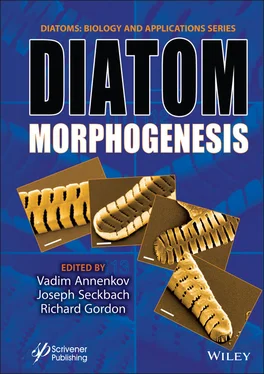203 200
204 201
205 202
206 203
207 204
208 205
209 206
210 207
211 208
212 209
213 210
214 211
215 212
216 213
217 214
218 215
219 216
220 217
221 218
222 219
223 220
224 221
225 222
226 223
227 224
228 225
229 226
230 227
231 228
232 229
233 230
234 231
235 232
236 233
237 234
238 235
239 236
240 237
241 238
242 239
243 240
244 241
245 242
246 243
247 244
248 245
249 246
250 247
251 248
252 249
253 250
254 251
255 253
256 254
257 255
258 256
259 257
260 258
261 259
262 260
263 261
264 262
265 263
266 264
267 265
268 266
269 267
270 268
271 269
272 270
273 271
274 272
275 273
276 274
277 275
278 276
279 277
280 278
281 279
282 280
283 281
284 282
285 283
286 284
287 285
288 286
289 287
290 288
291 289
292 290
293 291
294 292
295 293
296 294
297 295
298 296
299 297
300 298
301 299
302 300
303 301
304 302
305 303
306 304
307 305
308 306
309 307
310 308
311 309
312 310
313 311
314 312
315 313
316 314
317 315
318 316
319 317
320 318
321 319
322 320
323 321
324 322
325 323
326 324
327 325
328 326
329 327
330 328
331 329
332 330
333 331
334 332
335 333
336 334
337 335
338 336
339 337
340 338
341 339
342 340
343 341
344 342
345 343
346 344
347 345
348 346
349 347
350 349
351 350
352 351
353 352
354 353
355 354
356 355
357 356
358 357
359 358
360 359
361 360
362 361
363 362
364 363
365 364
366 365
367 366
368 367
369 368
370 369
371 370
372 371
373 372
374 373
375 374
376 375
377 376
378 377
379 378
380 379
381 380
382 381
383 382
384 383
385 384
386 385
387 386
388 387
389 388
390 389
391 390
392 391
393 392
394 393
395 394
396 395
397 396
398 397
399 398
400 399
401 400
402 401
403 402
404 403
405 404
406 405
407 406
408 407
409 408
410 409
411 411
412 412
413 413
414 414
415 415
416 416
417 417
418 418
419 419
420 420
421 421
422 422
423 423
424 424
Scrivener Publishing100 Cummings Center, Suite 541J Beverly, MA 01915-6106
Diatoms: Biology and Applications
Series Editors: Richard Gordon (dickgordoncan@xplornet.com) and Joseph Seckbach (Joseph.Seckbach@mail.huji.ac.il)
Scope: The diatoms are a single-cell algal group, with each cell surrounded by a silica shell. The shells have beautiful attractive shapes with multiscalar structure at 8 orders of magnitude, and have several uses. 20% of the oxygen we breathe is produced by diatom photosynthesis, and they feed most of the aquatic food chain in freshwaters and the oceans. Diatoms serve as sources of biofuel and electrical solar energy production and are impacting on nanotechnology and photonics. They are important ecological and paleoclimate indicators. Some of them are extremophiles, living at high temperatures or in ice, at extremes of pH, at high or low light levels, and surviving desiccation. There are about 100,000 species and as many papers written about them since their discovery over three hundred years ago. The literature on diatoms is currently doubling every ten years, with 50,000 papers during the last decade (2006-2016). In this context, it is timely to review the progress to date, highlight cutting-edge discoveries, and discuss exciting future perspectives. To fulfill this objective, this new Diatom Series is being launched under the leadership of two experts in diatoms and related disciplines. The aim is to provide a comprehensive and reliable source of information on diatom biology and applications and enhance interdisciplinary collaborations required to advance knowledge and applications of diatoms.
Publishers at Scrivener
Martin Scrivener ( martin@scrivenerpublishing.com) Phillip Carmical ( pcarmical@scrivenerpublishing.com)
Edited by
Vadim Annenkov,
Limnological Institute, Siberian Branch of Russian Academy of Sciences
Joseph Seckback
The Hebrew University of Jerusalem, Israel
and
Richard Gordon
Gulf Specimen Marine Laboratory & Aquarium, Panacea, FL, USA and Wayne State University, Detroit, MI, USA

This edition first published 2022 by John Wiley & Sons, Inc., 111 River Street, Hoboken, NJ 07030, USA and Scrivener Publishing LLC, 100 Cummings Center, Suite 541J, Beverly, MA 01915, USA
© 2022 Scrivener Publishing LLC
For more information about Scrivener publications please visit www.scrivenerpublishing.com.
All rights reserved. No part of this publication may be reproduced, stored in a retrieval system, or transmitted, in any form or by any means, electronic, mechanical, photocopying, recording, or otherwise, except as permitted by law. Advice on how to obtain permission to reuse material from this title is available at http://www.wiley.com/go/permissions.
Wiley Global Headquarters
111 River Street, Hoboken, NJ 07030, USA
For details of our global editorial offices, customer services, and more information about Wiley products visit us at www.wiley.com.
Limit of Liability/Disclaimer of Warranty
While the publisher and authors have used their best efforts in preparing this work, they make no representations or warranties with respect to the accuracy or completeness of the contents of this work and specifically disclaim all warranties, including without limitation any implied warranties of merchant-ability or fitness for a particular purpose. No warranty may be created or extended by sales representatives, written sales materials, or promotional statements for this work. The fact that an organization, website, or product is referred to in this work as a citation and/or potential source of further information does not mean that the publisher and authors endorse the information or services the organization, website, or product may provide or recommendations it may make. This work is sold with the understanding that the publisher is not engaged in rendering professional services. The advice and strategies contained herein may not be suitable for your situation. You should consult with a specialist where appropriate. Neither the publisher nor authors shall be liable for any loss of profit or any other commercial damages, including but not limited to special, incidental, consequential, or other damages. Further, readers should be aware that websites listed in this work may have changed or disappeared between when this work was written and when it is read.
Читать дальше













